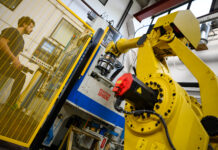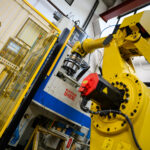In recent decades, the topic of workplace safety has gained increasing importance, becoming one of the top priorities in both the legal and social landscape. Every year, thousands of workplace accidents and occupational diseases are reported—often caused by negligence, lack of preparation, or a general lack of awareness. “These tragedies highlight just how crucial proper education is from the earliest stages of learning, in order to prevent risks and foster a long-lasting culture of prevention,” says Engineer Gaetano Romanazzi, founder of Romanazzi Safety Engineering, a highly specialized engineering firm that provides consulting services for workplace health and safety.
By Roberta Imbimbo
Engineer Romanazzi, why is it important to teach workplace safety at school?
Because despite significant legislative progress, the culture of safety still struggles to take deep and lasting root. Too often, safety training is seen as a mere bureaucratic requirement, rather than as a core value to be upheld. In a context where prevention is frequently pushed to the background, introducing workplace safety as part of the school curriculum marks a true cultural shift. It’s a unique opportunity to instill a preventive mindset and to transform future workers into more responsible and aware individuals.
The recent amendment to Article 3 of Law No. 92 of 2019, established by Law No. 21 of February 17, 2025, marks an important change in how civic education is addressed in schools.
Exactly. The goal of lawmakers is to expand civic education in schools by incorporating workplace safety as a core subject within the educational journey. The law aims to raise awareness among young people from an early age about the importance of safety in the workplace, helping to create a deeply rooted culture of prevention. The decision to integrate workplace safety into the school curriculum is meant to shape students into informed citizens and responsible future workers. Teaching safety regulations thus becomes a powerful tool for reducing workplace accidents—bringing young people closer to the realities of work life, while also making them more accountable on crucial topics that are absolutely worthy of classroom discussion. Safety culture is not just a matter of rules; it’s a set of values that must be taught early in life to build a safer future for all. Only through targeted and ongoing education can we build a safer and more conscious work environment, one where future workers are better equipped to handle risks.
How do you view this revolutionary change?
I see it as a positive and innovative shift—not only because it prepares young people to deal with risks more effectively, but also because it has a positive impact on the world of work. A young person who receives a solid safety education in school will inevitably be a better-prepared worker. This will lead to fewer accidents and injuries, with clear benefits in terms of business productivity and reduced costs related to workplace incidents. Investing in school-based safety education is therefore an investment in the future of our production system. A well-prepared workforce that is aware of risks will have a direct impact on our country’s competitiveness. It will not only improve quality of life at work but also help create safer work environments—the foundation of any sustainable economic development. This is a long-term investment that will pay off with a safer, more productive society, ready to face future challenges with greater awareness and preparation.
To include:
Website: https://www.safety-engineering.it/
Email: romanazzi@safety-engineering.it

























































